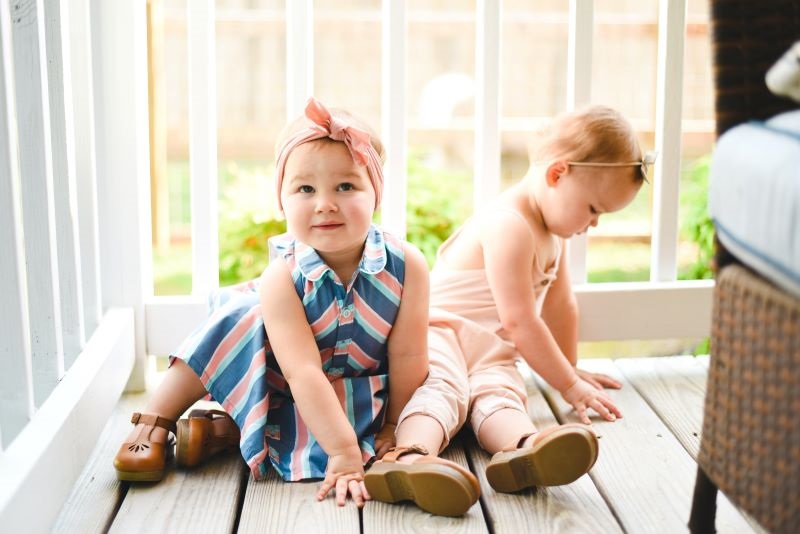
Dressing a child might seem like a straightforward task, but there’s more to it than meets the eye. As parents or caregivers, we want our little ones to be comfortable, safe, and, of course, adorable in their outfits. But with a plethora of clothing options available today, it’s easy to get overwhelmed. In this article, we’ll explore the essential considerations when choosing clothes for children, from newborns to toddlers and beyond. We’ll delve into factors like comfort, safety, style, and practicality. So, let’s embark on this exciting journey of dressing our tiny tots!
Understanding the Age and Growth
Before we dive into the world of children’s clothing, it’s crucial to recognize that kids grow rapidly, especially during their early years. This growth affects their clothing needs significantly. Babies, for example, can double their birth weight in just a few months. As a result, it’s important to choose clothing that allows for growth.
Comfort is Key
One of the foremost considerations when selecting clothes for children is comfort. Babies and young children have sensitive skin, and they spend most of their time sleeping, playing, and exploring. Scratchy, ill-fitting, or tight clothes can lead to discomfort and irritability. Here are some tips to ensure comfort:
Soft Fabrics: Opt for soft, breathable fabrics like cotton. These materials are gentle on the skin and allow for better airflow.
Avoid Scratchy Seams: Check for any rough seams or tags that might rub against the child’s skin. Seamless clothing is a great choice.
Easy Accessibility: Choose clothes with snaps, zippers, or elastic waistbands for ease of dressing and diaper changes.
Safety First
Safety should be a top priority when dressing children. Here are some safety considerations:
No Loose Accessories: Avoid clothing with small buttons, bows, or other small parts that can be a choking hazard.
Flame Resistance: Look for sleepwear that is labeled as flame-resistant to reduce the risk of burns.
Proper Fit: Ensure that the clothing fits well to prevent tripping or entanglement.
Dressing for the Weather
Dressing a child appropriately for the weather is essential for their well-being. Here are some seasonal clothing tips:
Summer: Lightweight, breathable fabrics like cotton are perfect for keeping cool. Don’t forget a wide-brimmed hat and sunscreen for outdoor activities.
Winter: Layering is key to keeping warm. Use thermal wear, sweaters, and insulated jackets. Don’t skimp on hats, gloves, and scarves to protect from the cold.
Transitional Seasons: Spring and fall may require a mix of light and warm clothing to accommodate fluctuating temperatures.
Stylish Yet Practical
While dressing your child, you’ll undoubtedly want them to look stylish. However, practicality should never be sacrificed for style. Here are some style tips:
Mix and Match: Invest in versatile pieces that can be mixed and matched for various outfits. This allows for both style and functionality.
Easy to Clean: Kids can be messy, so opt for machine-washable and stain-resistant fabrics whenever possible.
Consider Growth: Select clothing that allows room for growth, so you don’t have to replace their entire wardrobe every few months.
Practicality Matters
Practicality is crucial when choosing children’s clothing. Here are some practical considerations:
Diaper Changes: For babies, onesies with snap closures are a lifesaver during diaper changes.
Potty Training: As your child grows, consider clothing that is easy for them to manage when using the potty.
School Dress Codes: If your child is school-aged, be mindful of any dress codes or uniform requirements.
Conclusion
In conclusion, dressing a child involves a careful balance between comfort, safety, style, and practicality. By considering these factors and keeping your child’s age and growth in mind, you can ensure that they are not only dressed appropriately but also feel comfortable and confident in their outfits.
Frequently Asked Questions (FAQs)
How often should I update my child’s wardrobe as they grow?
It’s a good idea to reassess your child’s clothing needs every few months, especially during growth spurts. Keep an eye on whether their clothes are becoming too tight or short.
What should I do if my child has sensitive skin and frequently develops rashes?
Opt for hypoallergenic fabrics like organic cotton and avoid clothing with tags or rough seams. Consult a pediatrician if the issue persists.
Are hand-me-downs a good choice for children’s clothing?
Hand-me-downs can be an excellent way to save money, but ensure they are in good condition and meet safety standards. Wash them thoroughly before use.
What’s the best way to organize a child’s wardrobe for easy access?
Arrange clothing by type (e.g., tops, bottoms, pajamas) and size. Use labeled bins or dividers to keep things organized, making it easier to find what you need.
Should I prioritize style or comfort when choosing children’s clothing?
While style is important, comfort and practicality should take precedence, especially for younger children. Look for a balance between fashion and functionality.


